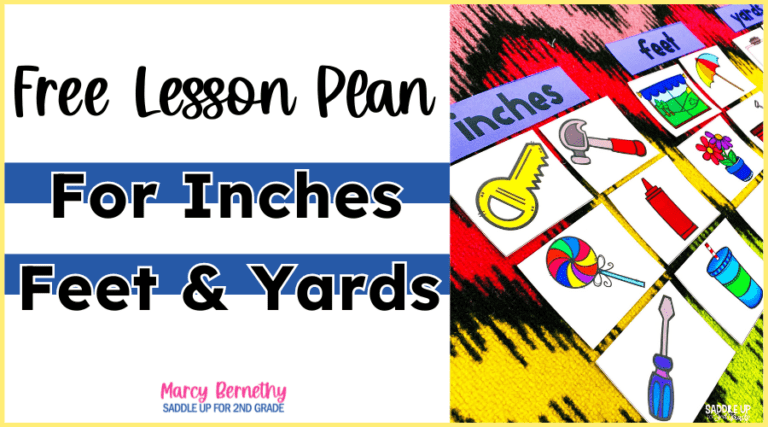

Join me for a FREE, Guided Math workshop to discover how to easily incorporate Guided Math into your current schedule!
Before students can begin subtracting 2 and 3 digit numbers, they must have a strong foundation of subtraction skills. Using their background knowledge of addition which means greater than or more, they can begin to learn that subtracting means taking away or fewer. Because not all second graders learn the same way, I like to share multiple methods with my students when it comes to basic subtraction strategies.
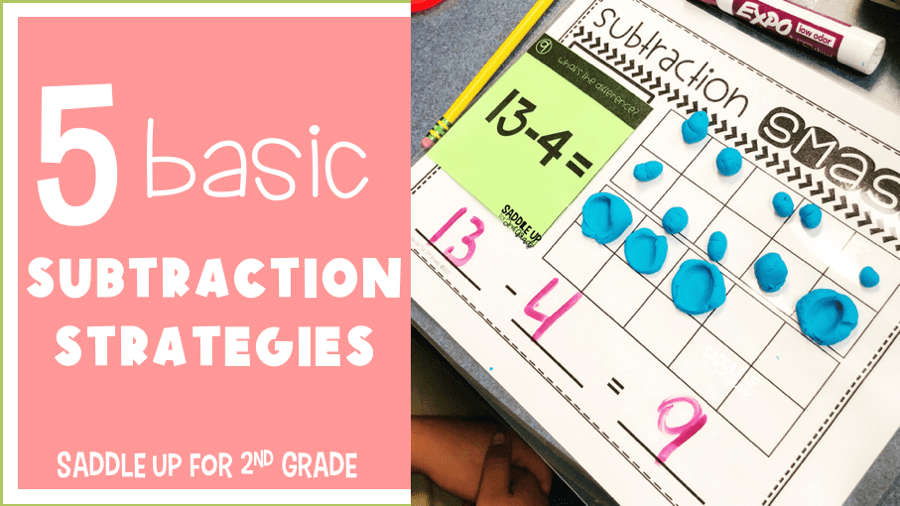
Share examples on anchor charts you can refer to throughout your unit. These visual representations will help your learners grow and practice each method to find what makes the most sense to them. Each second grade math strategy is introduced one at a time over several days.
Each time a subtraction strategy is added to our anchor chart, I have my students add it to their own personal anchor chart that they complete in their math journal. This allows them to take ownership in the process and always have it as a reference when practicing their math skills.
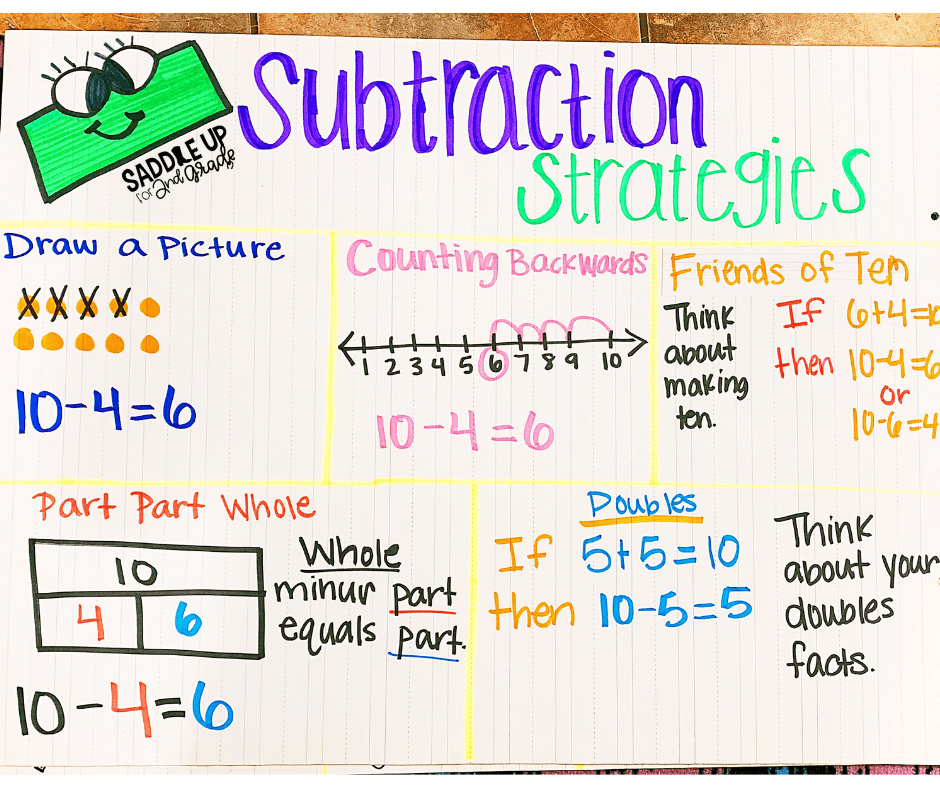
For this strategy, students will not be using manipulatives but rather will only have access to their pencils. It is important for students to know how to draw a picture to solve for their problems and come up with the correct answer.
They will not always have access to manipulatives but they will always have a pencil. When drawing out problems, I teach them to use dots and mark them out with x’s.
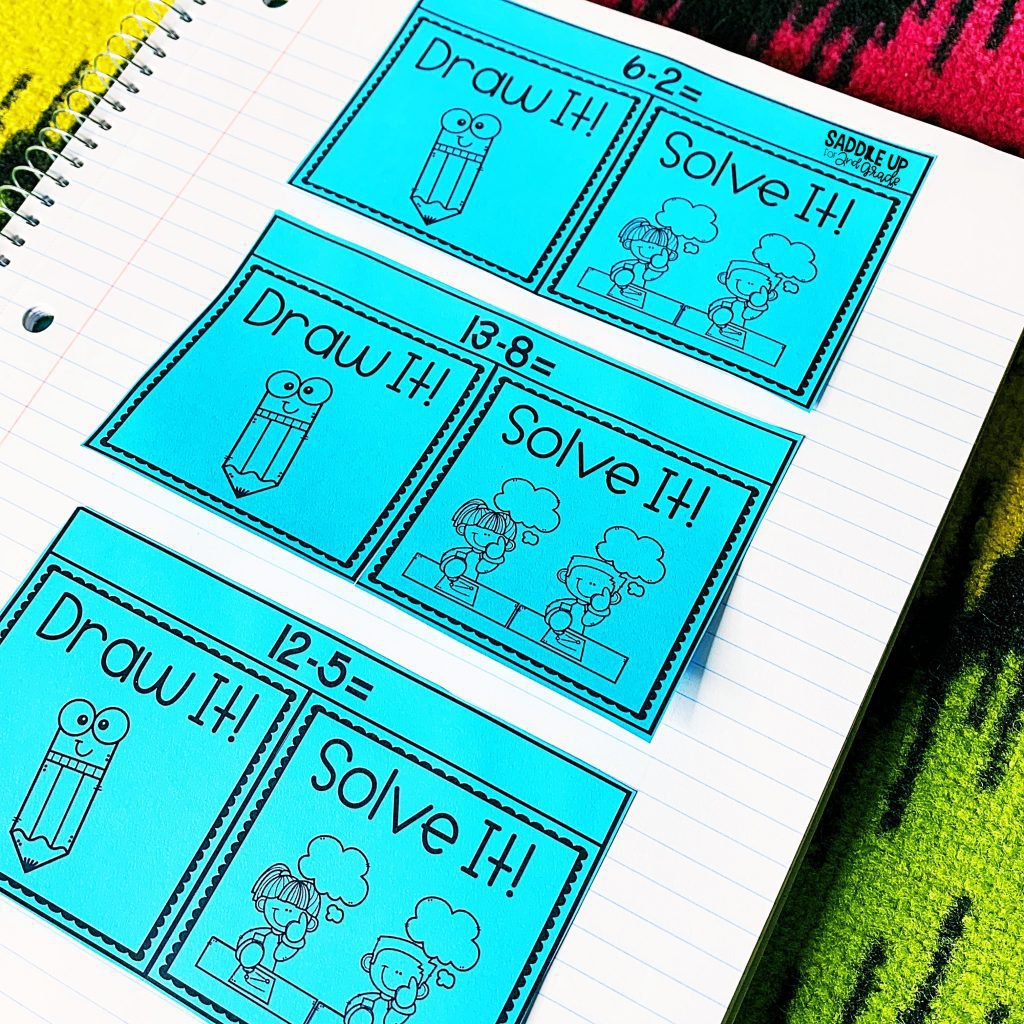
In order to practice this strategy, I give each student a Draw & Subtract page. They will read through the word problems and will practice drawing out the problem and writing the equation.
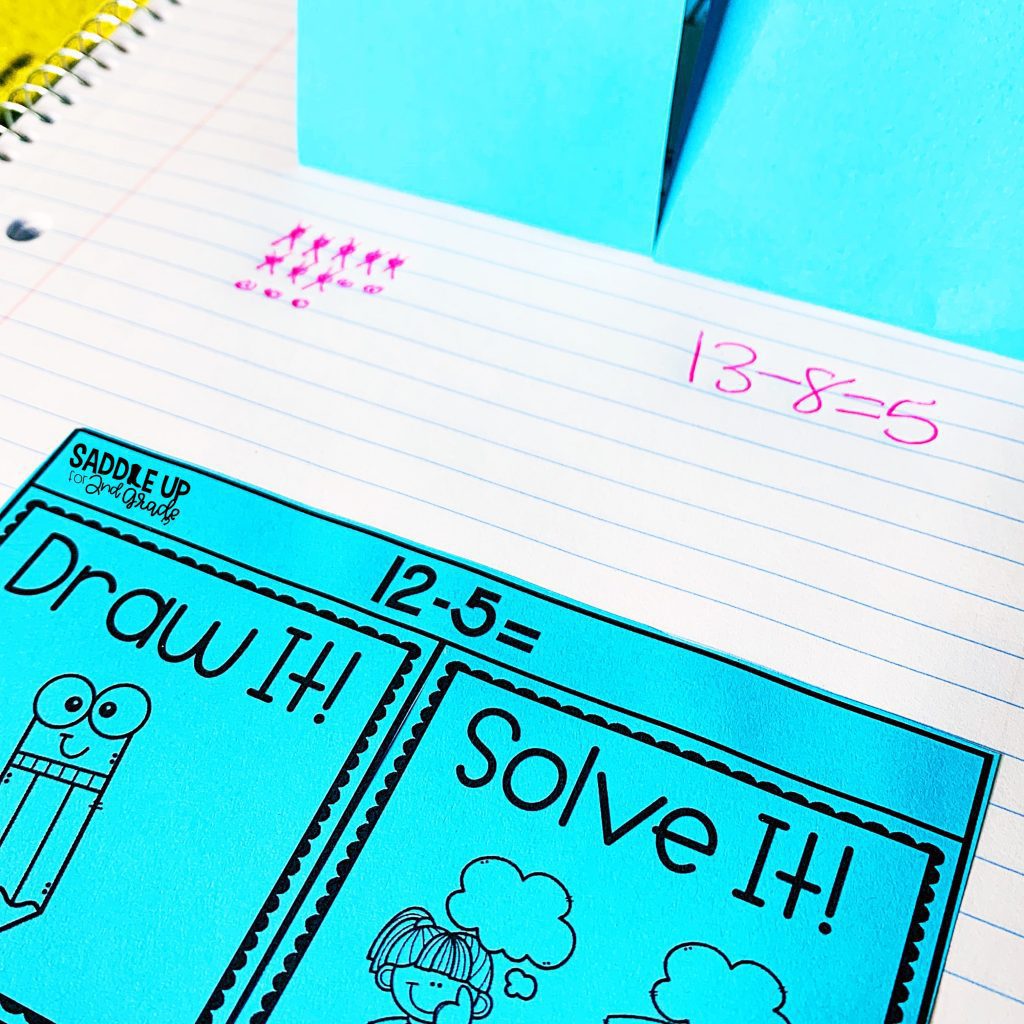
Counting backwards is when you start at the minuend (larger number) and count back. Students can use a variety of manipulatives as the perfect way to practice this.
As seen on the picture below, I start off using dominos (real ones or the printable ones available here), a number line, and a copy of the Counting Backwards page to practice.
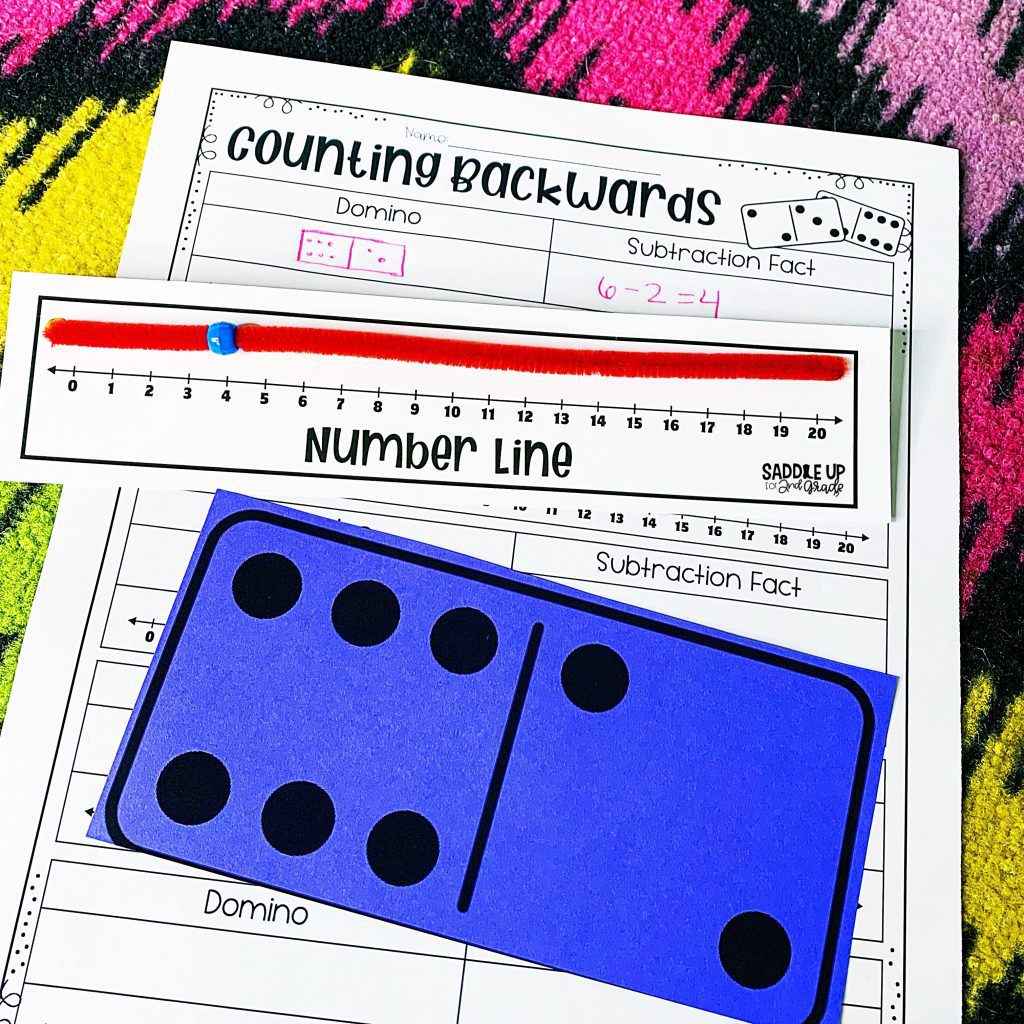
Also, Subtraction Bump is always a class favorite when learning to count backwards! Click here to see more about this fan favorite exciting game for students.
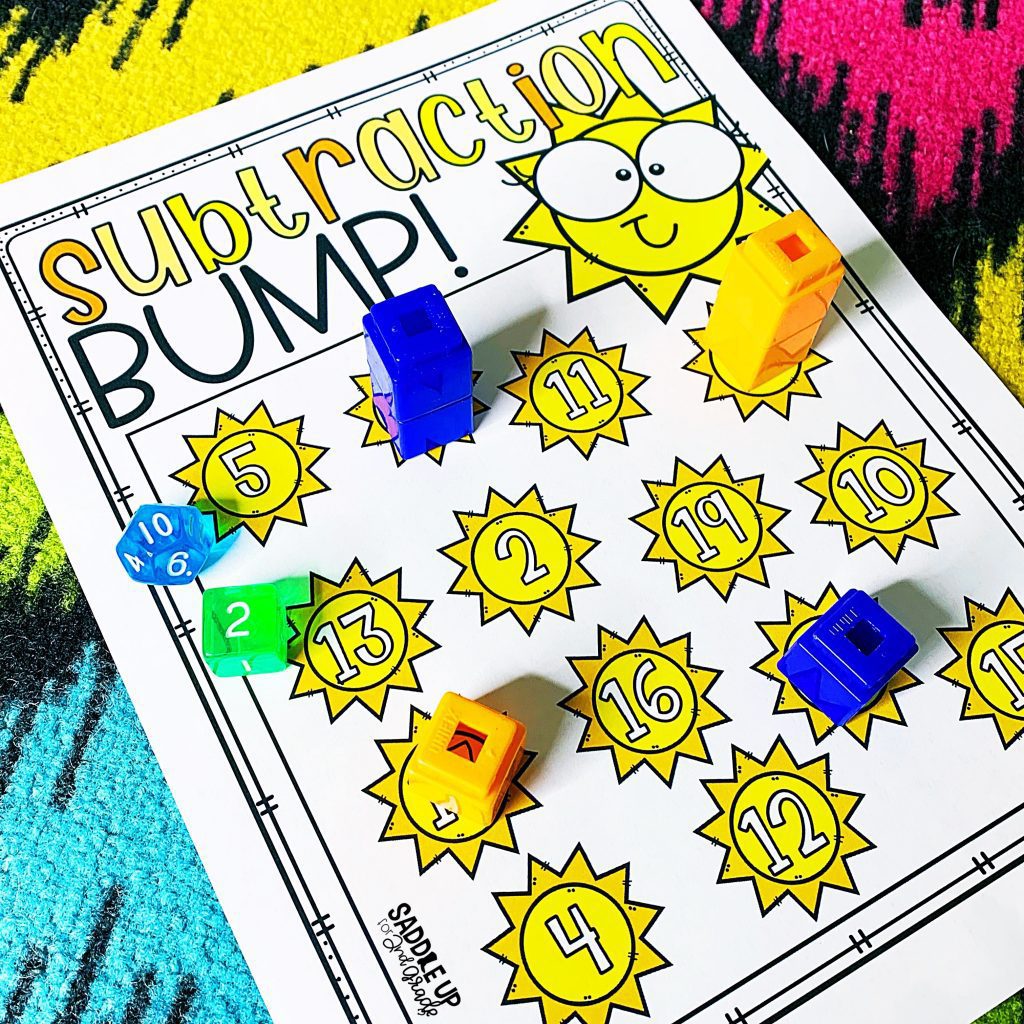
When introducing this strategy, I tell students to think about making a ten. We discuss the words “If/Then” and how they relate to mathematical problems.
For example… IF 6 +4 = 10, THEN 10 – 4 = 6 or 10 – 6 =4.
One of my favorite games to play while teaching this strategy is Knocking Down Pins. You can use a bowling set if you have one, but if not 10 cups and a ball work perfectly fine too! Here’s how you play:
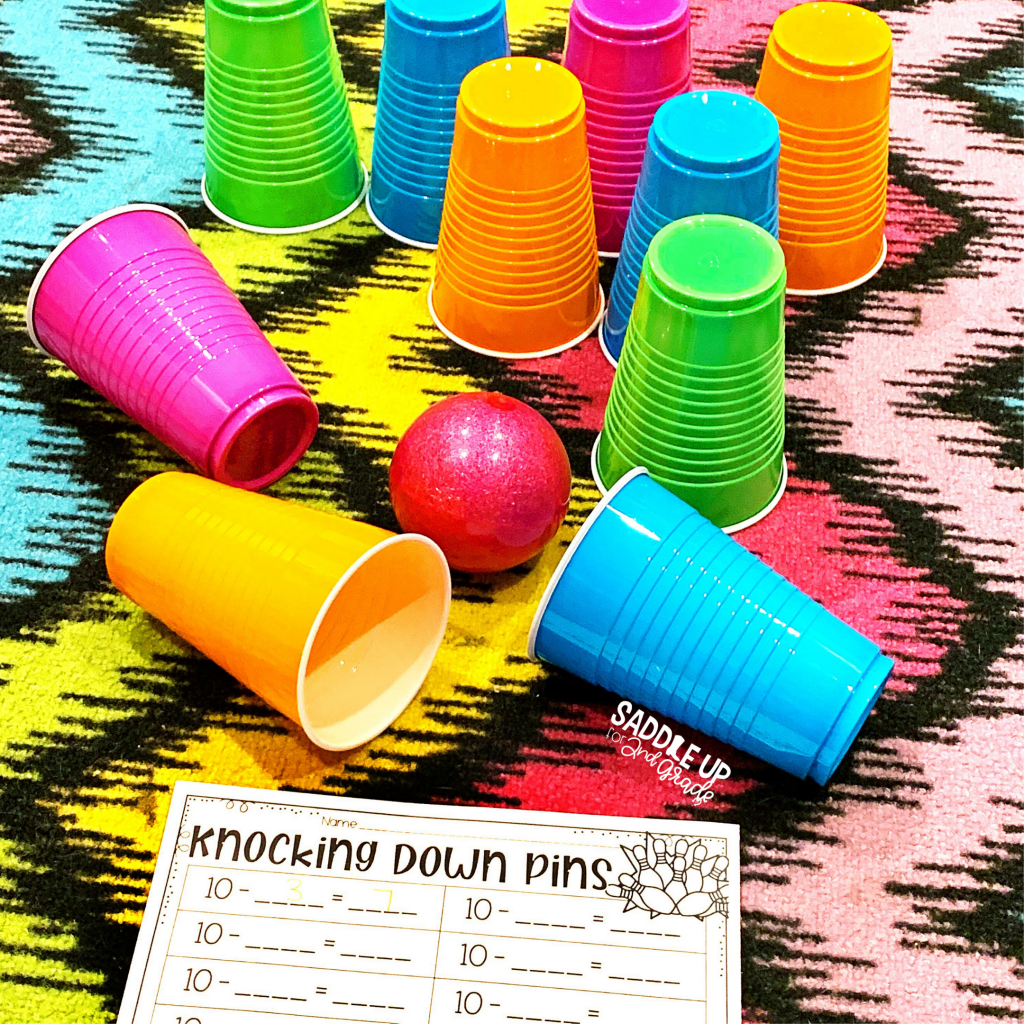
Students can also use play dough to play Subtraction Smash.
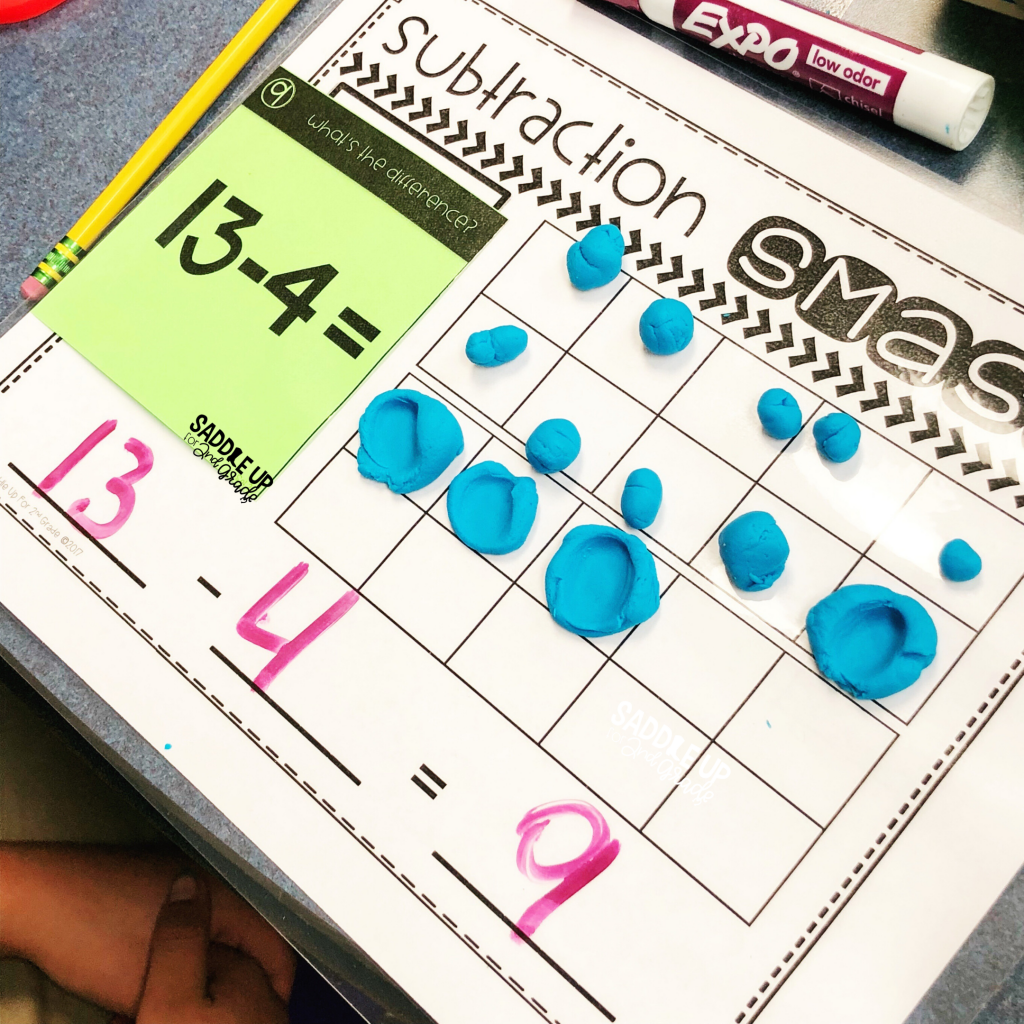
Using a visual representation of math is a very helpful and fun way to teach this strategy. Students must be able to recall which section of the mathematical problem is the “part” and which is the “whole”.
We learn this by constantly practicing whole minus part equals part.
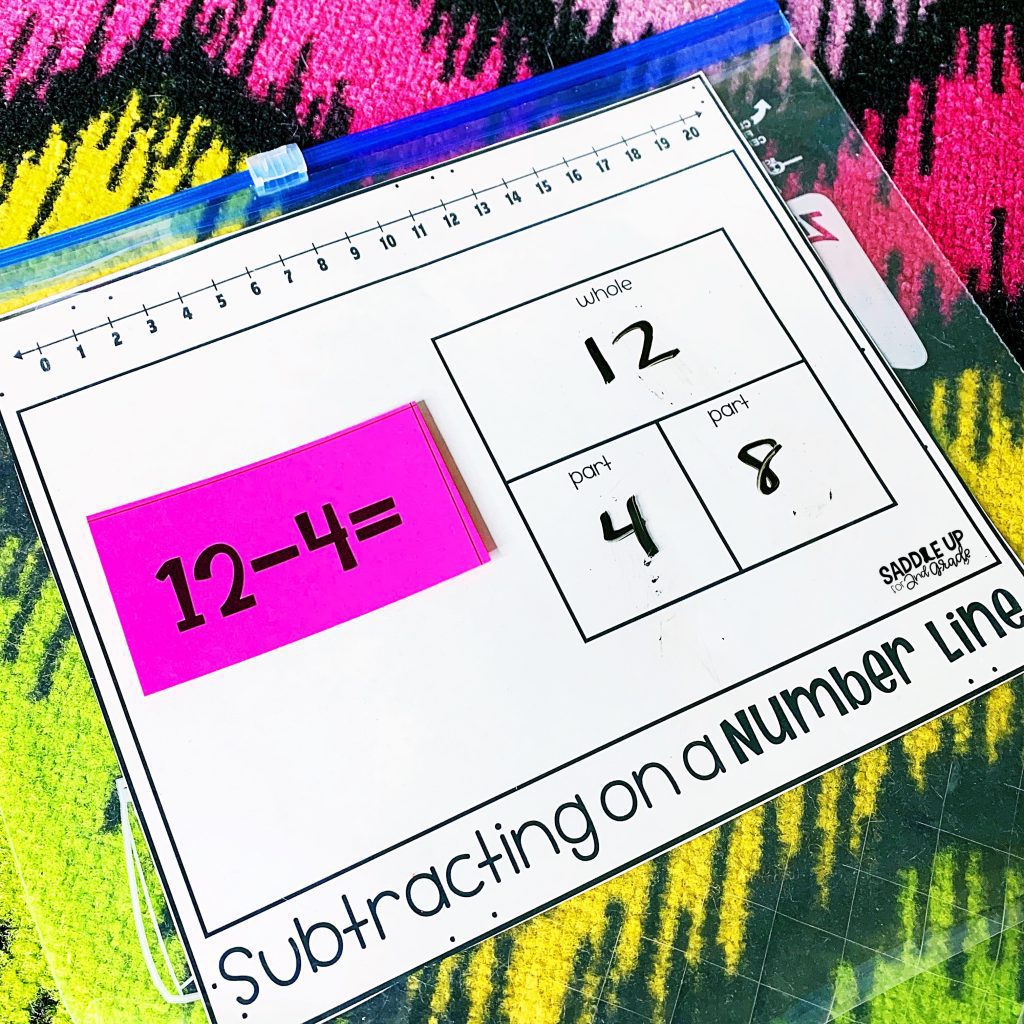
If you recall our doubles addition strategy, the same goes for subtraction.
Have student think about their double facts when solving (i.e. 5 + 5 = 10). Students will practice turning their doubles into a subtraction problem to solve for (i.e. 10 – 5 = 5) .
A fun idea and great way to practice this strategy is to play What’s the Symbol!.
We just covered a lot of subtraction strategies for math practice! Keep in mind that every student learns differently. If a student does better with one particular strategy over the other, let them stick with what works for them. Provide each of your students with lots of opportunities to practice in an engaging way.
All of the activities above can be found in my Addition and Subtraction Guided Math unit. If you’re looking for subtraction strategies and subtraction games with 2-digit numbers, you can read about the best ways in this blog post.
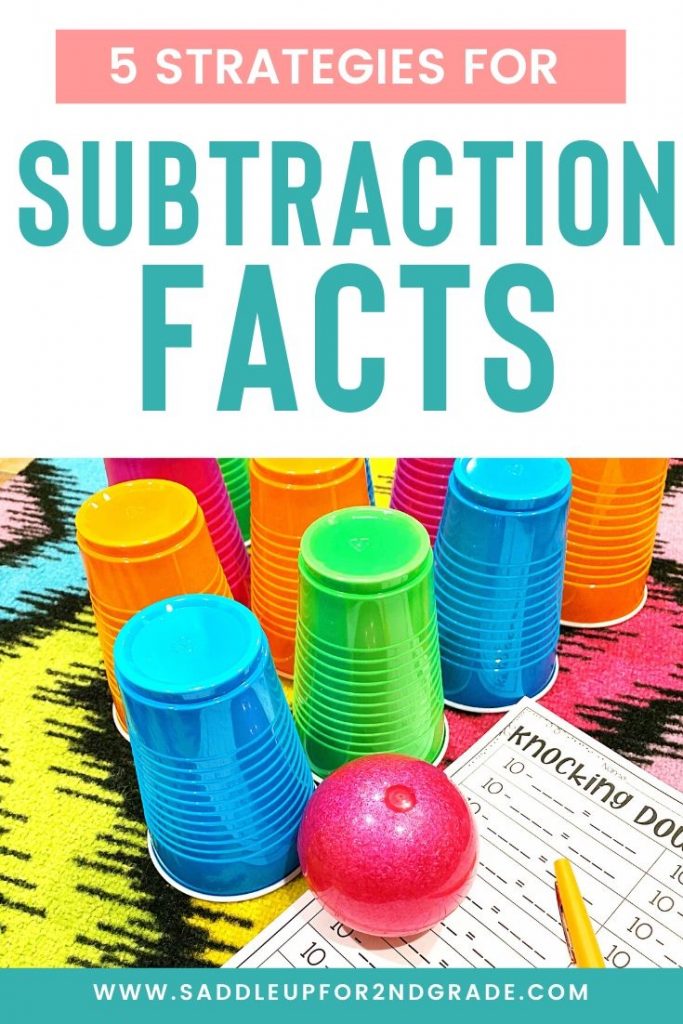
Math should be fun, not stressful. Ditch the timed math fact tests and replace them with math games that will help your students learn and retain information more effectively.
© Saddle Up for 2nd Grade • Website by KristenDoyle.co